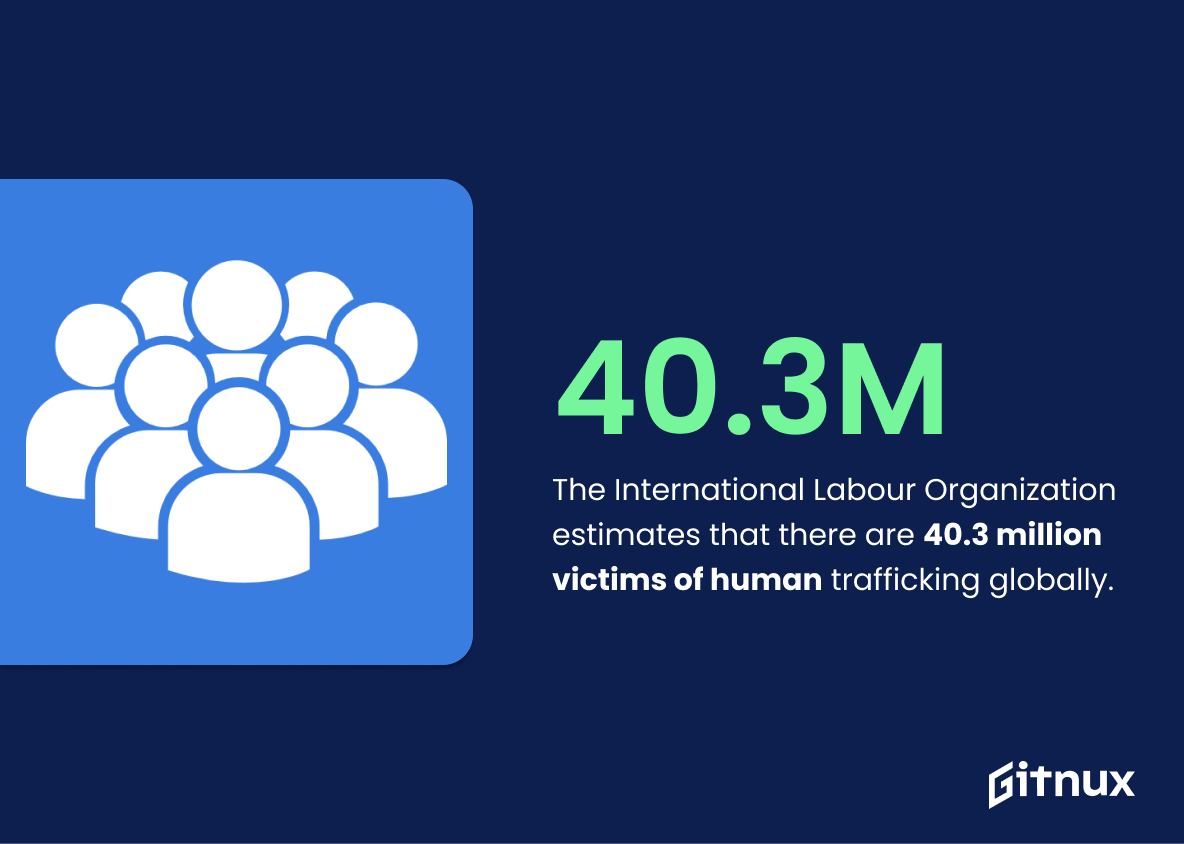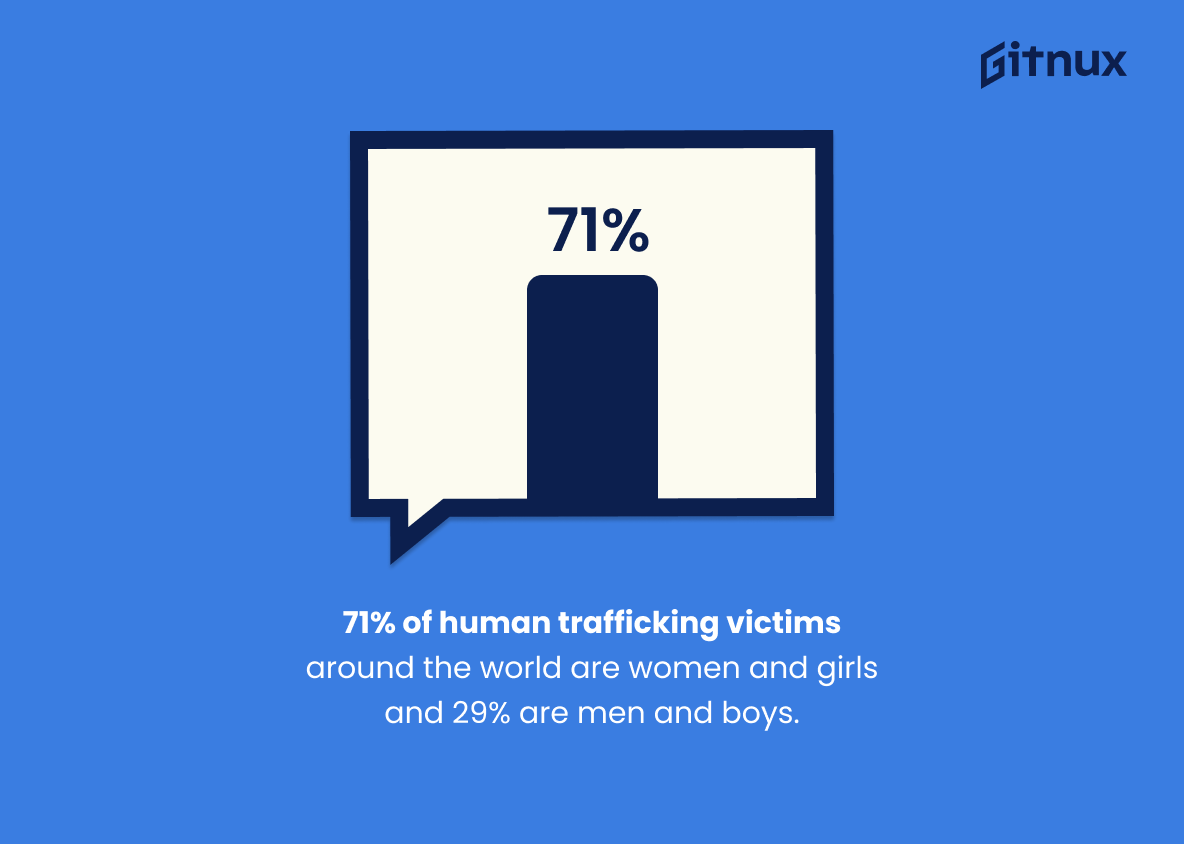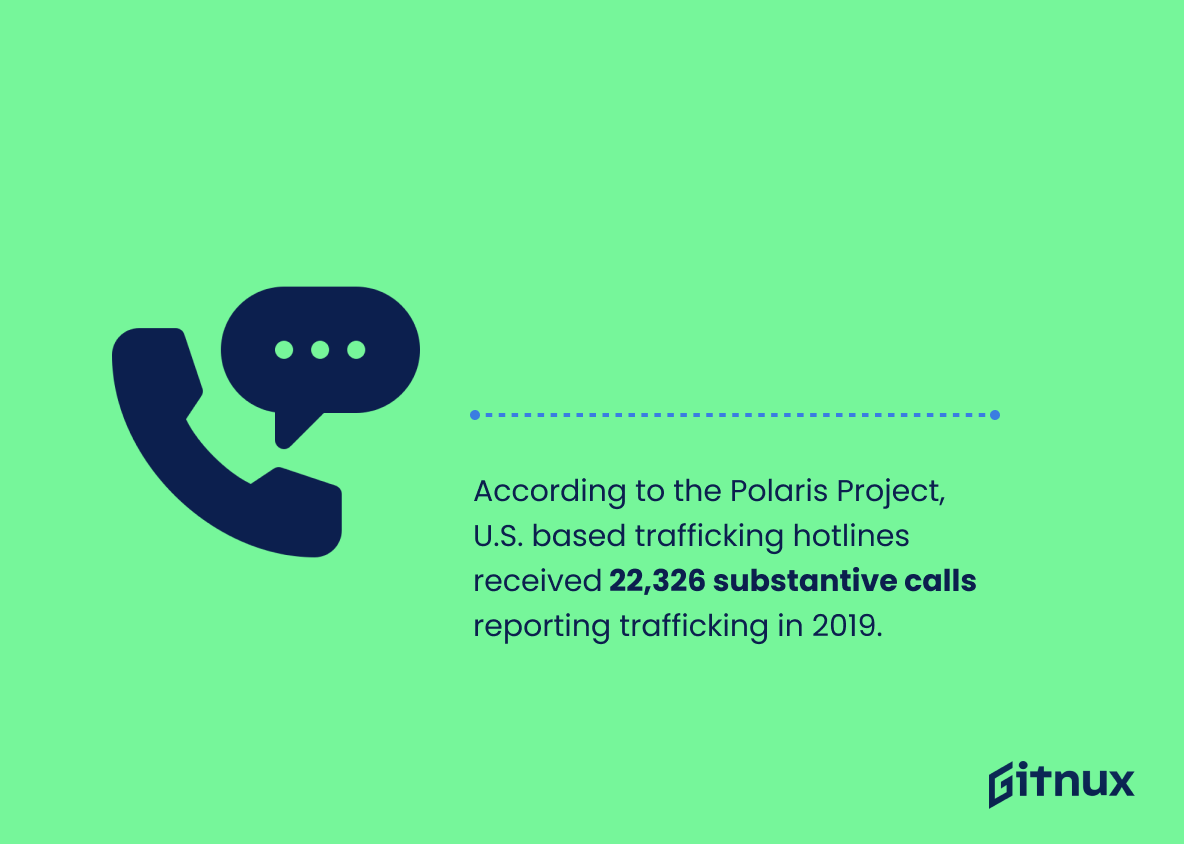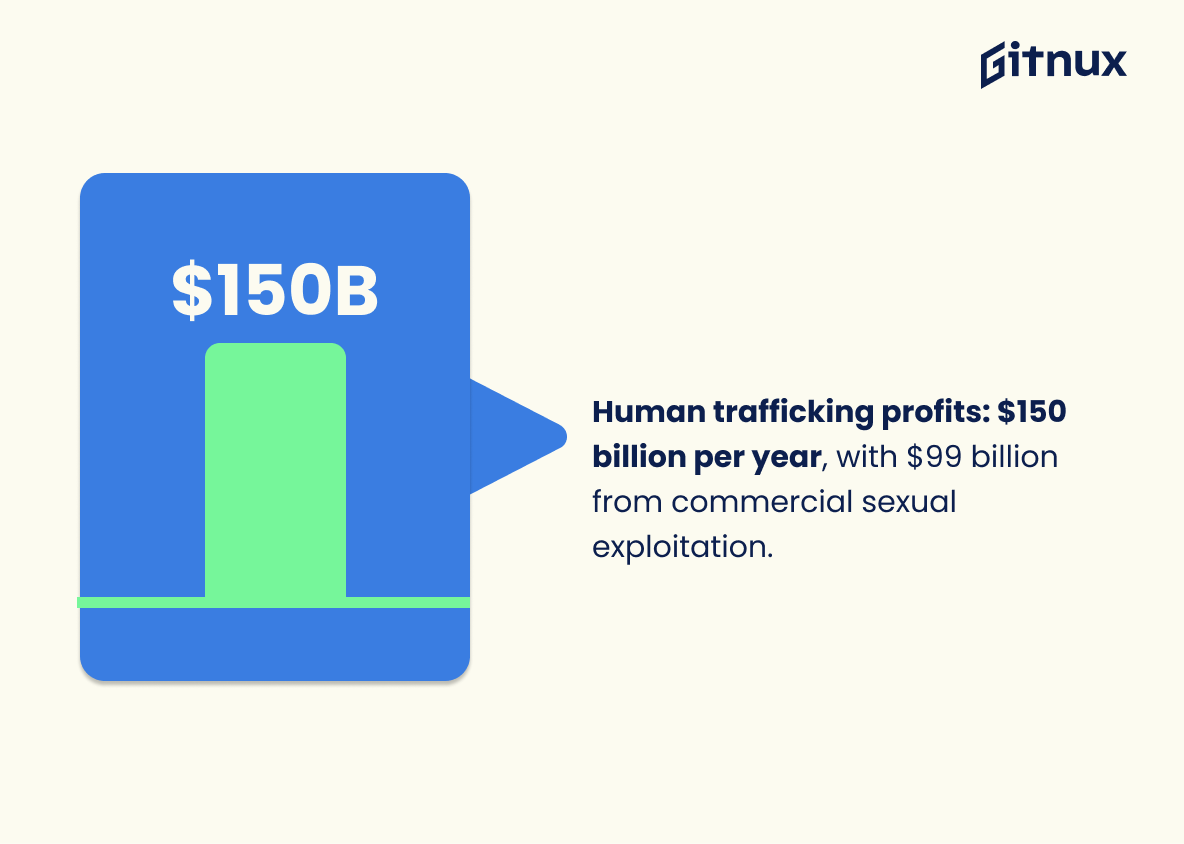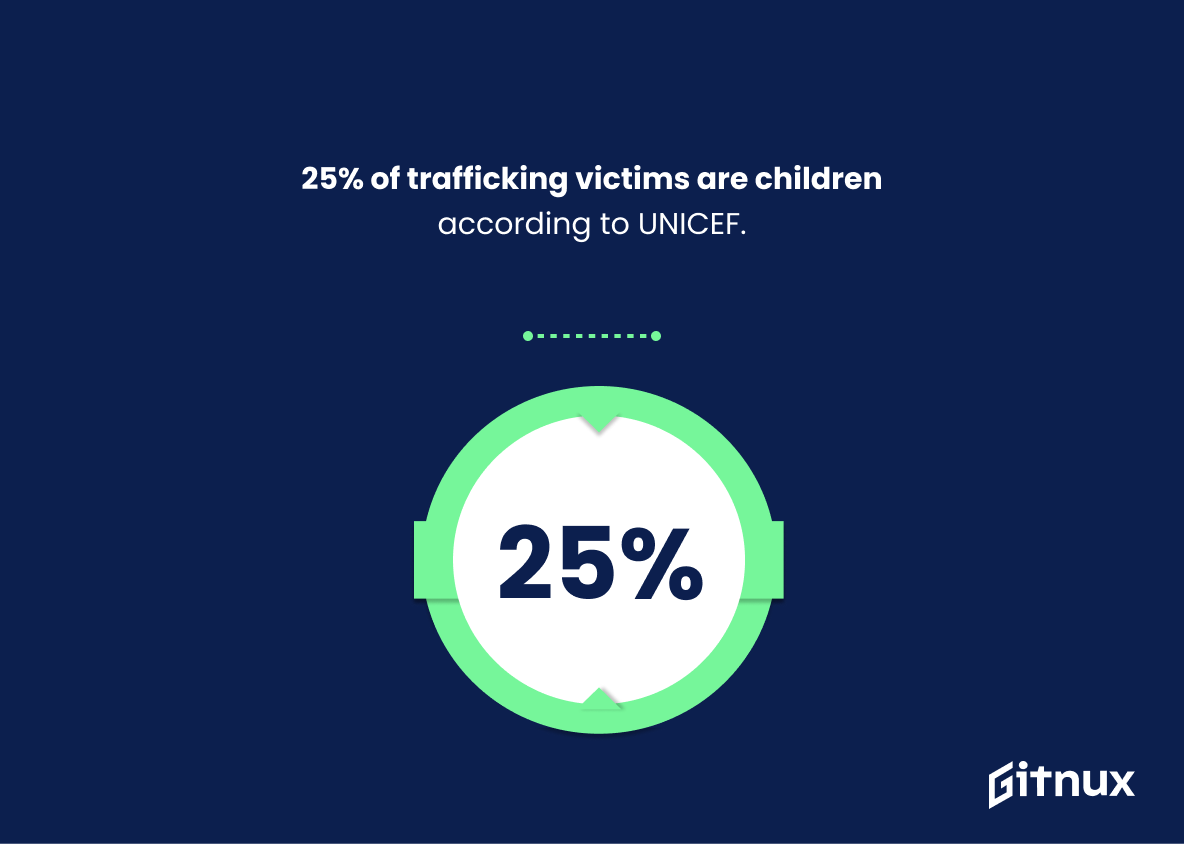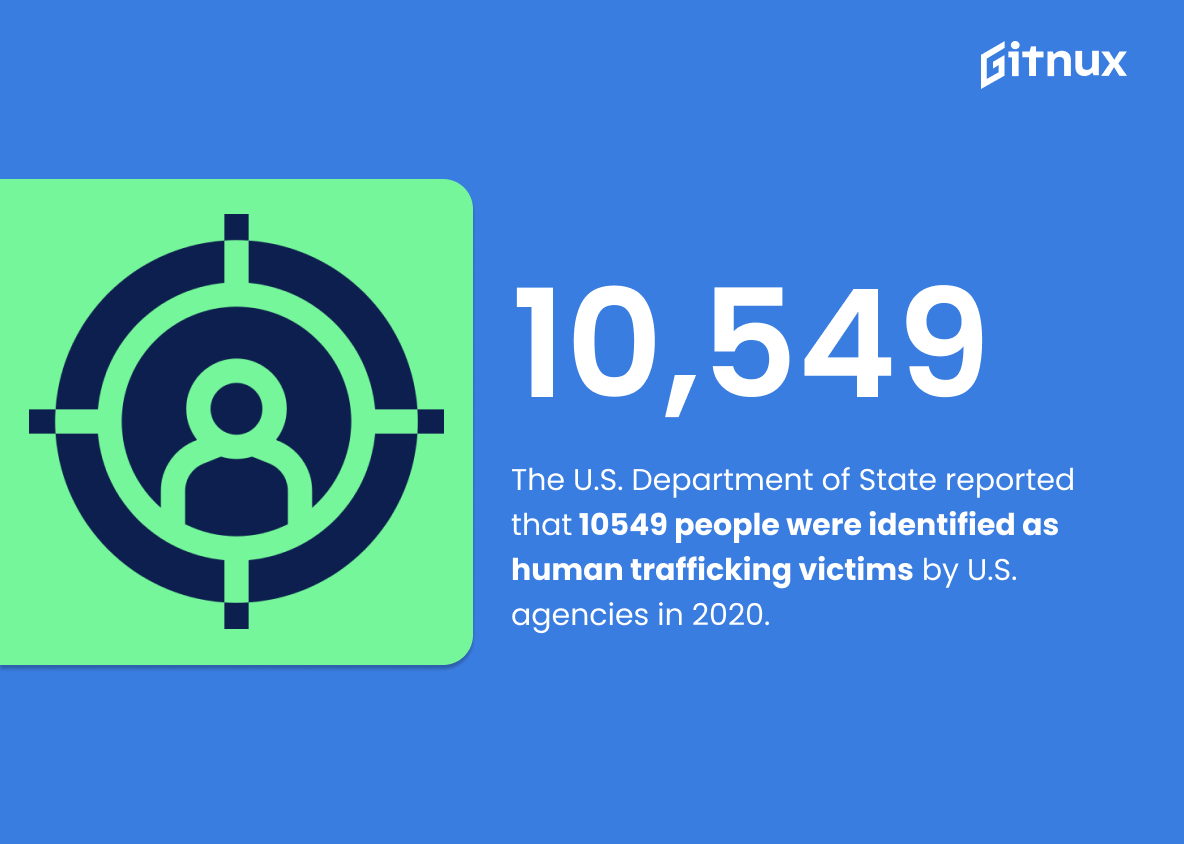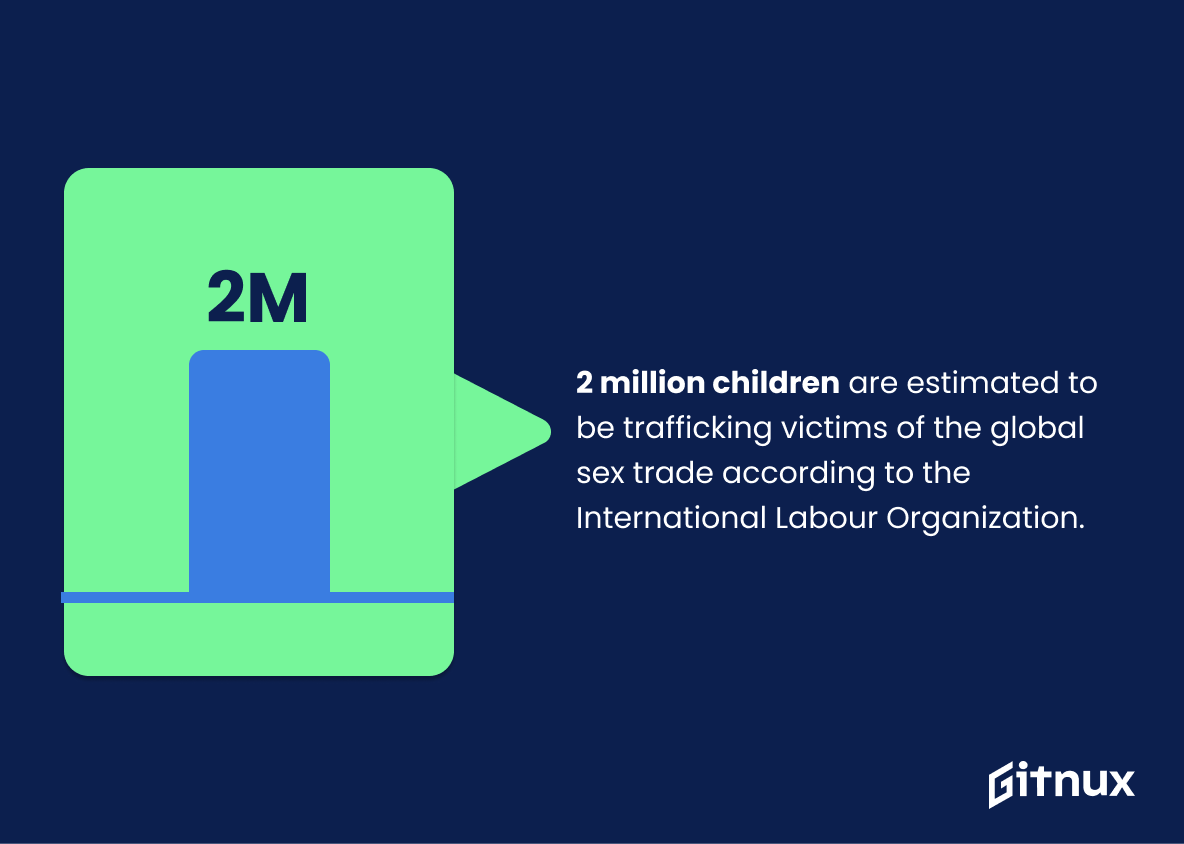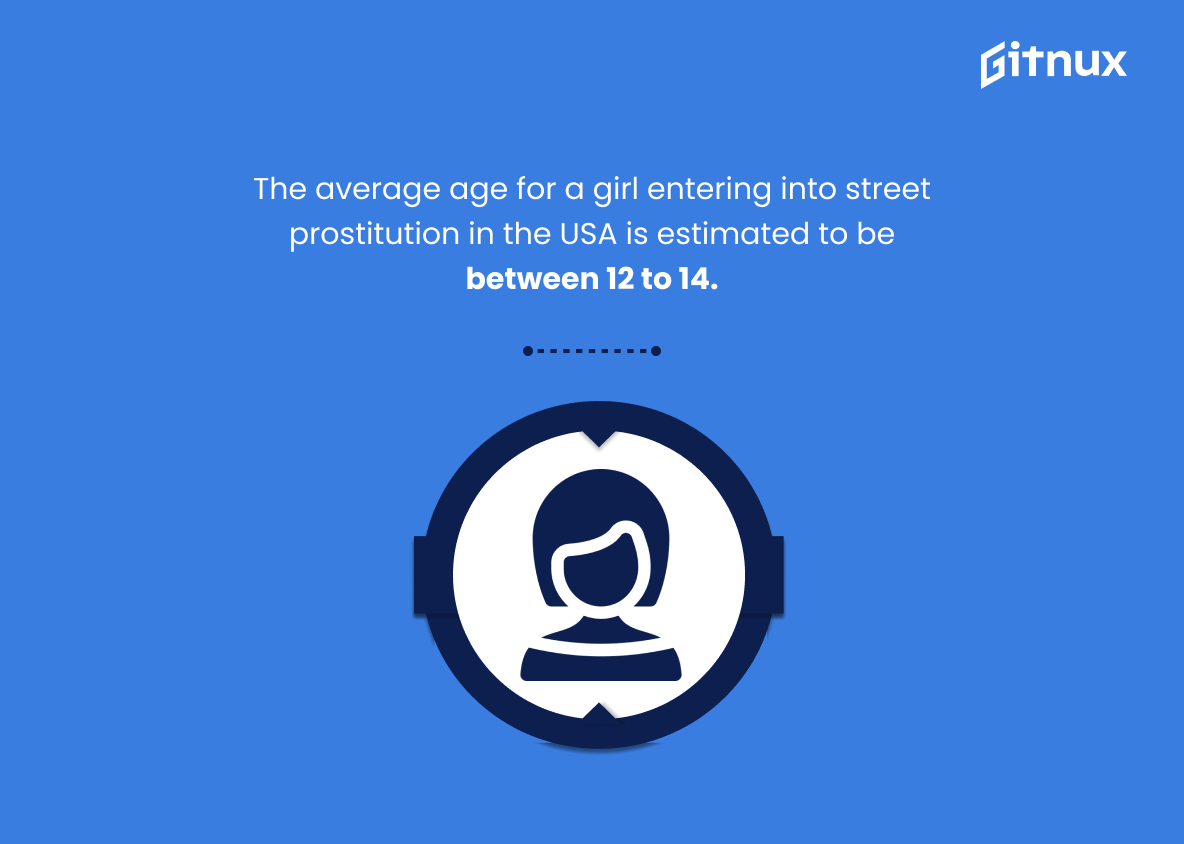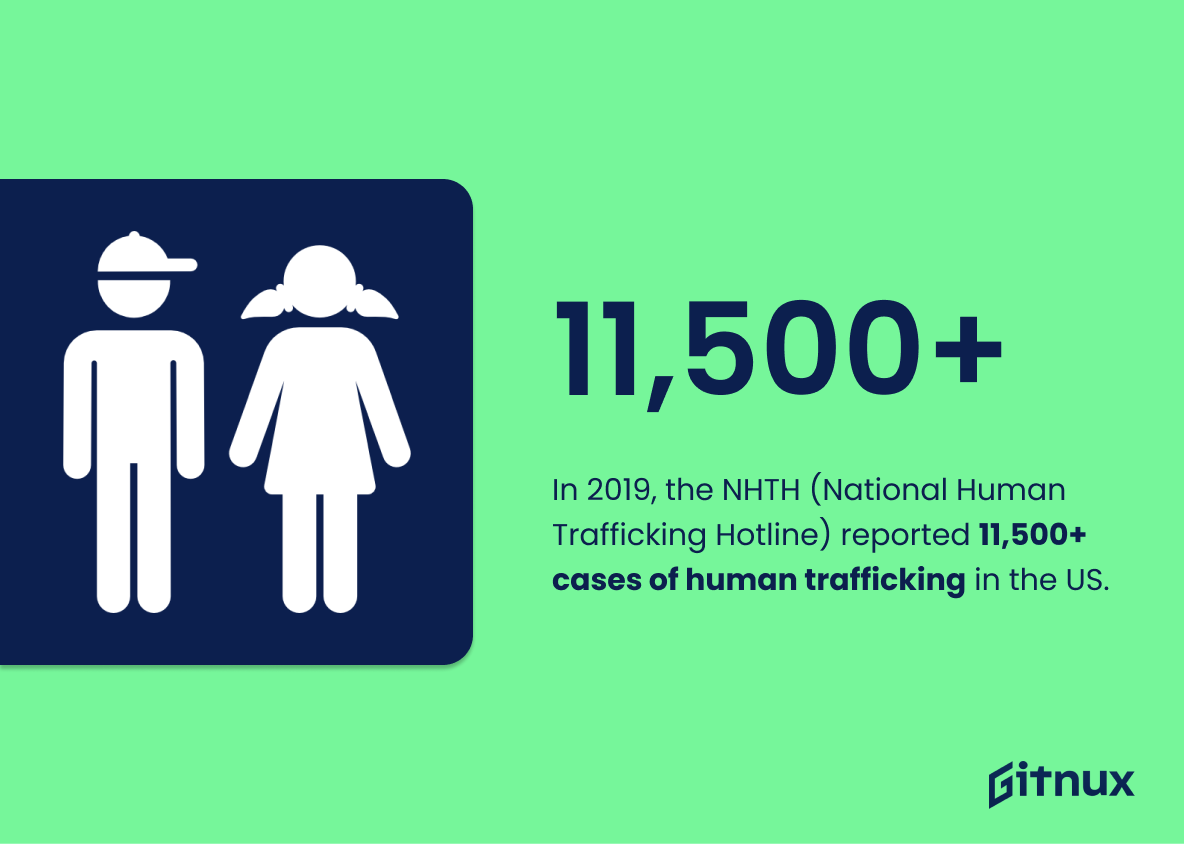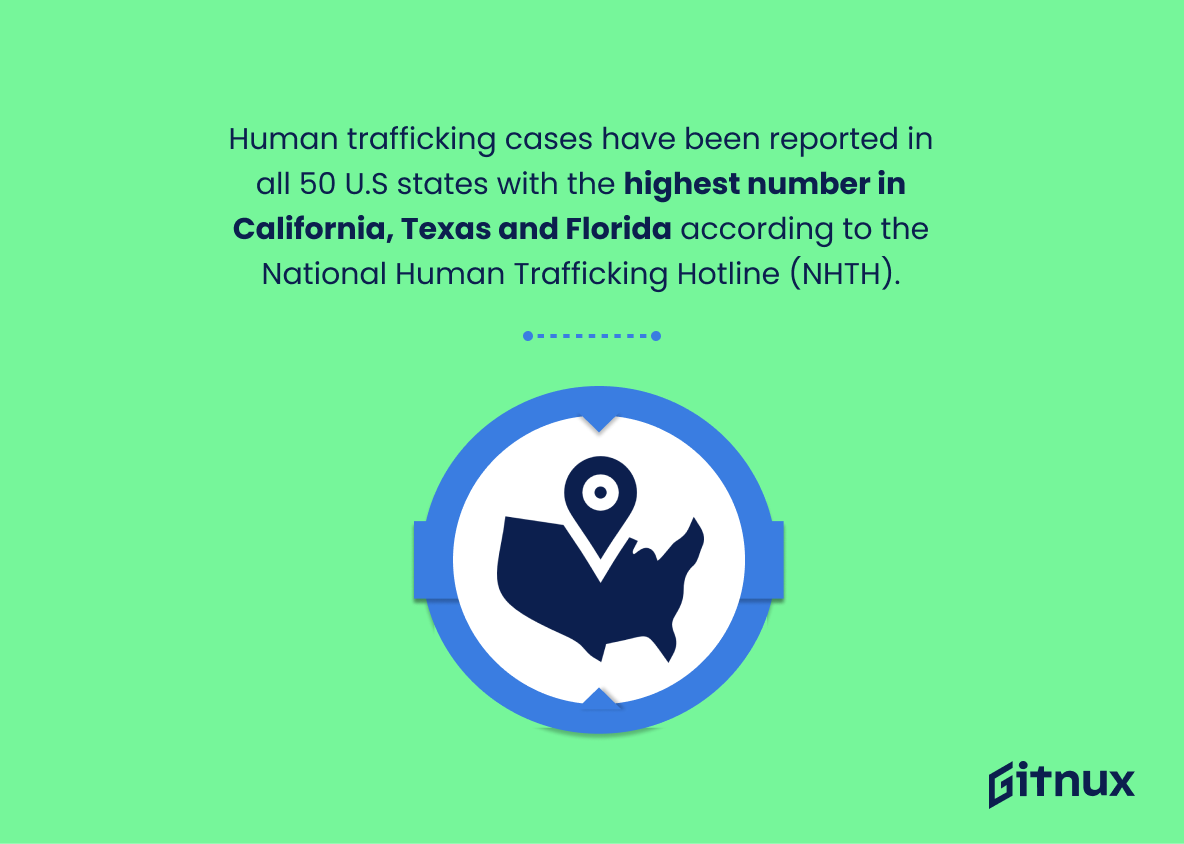Human trafficking, an offense against human dignity, continues to persist as a dark underbelly in our society. The following blog post aims to shed light on this grim reality by delving into the chilling statistics of human trafficking worldwide. By understanding the daunting figures, we hope to increase awareness, ignite conversations, and push for appropriate interventions to halt this modern-day form of slavery. Grappling with these facts is not easy, but it is crucial in our shared responsibility to protect victims and strive for a world free from exploitation.
The Latest Human Trafficking Statistics Unveiled
The International Labour Organization estimates that there are 40.3 million victims of human trafficking globally.
Unveiling the grim reality of our society, the International Labour Organization’s estimation of 40.3 million victims of human trafficking worldwide paints a stark and sobering picture. Imagine the entire population of Canada being ensnared in such a heinous crime. Nestled within this formidable figure are countless stories of pain and exploitation, each a poignant reminder of our collective failure to protect the most vulnerable. This figure, harrowing as it is, forms the backbone of our understanding of the magnitude and pervasiveness of human trafficking. In a blog post discussing Human Trafficking Statistics, including this statistic brings urgency and gravity to the discourse. It underscores the alarming prevalence of trafficking while simultaneously galvanizing readers to effect change, by arming them with one of the most powerful tools available: knowledge.
71% of human trafficking victims around the world are women and girls and 29% are men and boys.
Delving into the stark reality represented by these heartbreaking figures, it becomes evident that human trafficking disproportionately preys upon females, constituting 71% of its global victims. This unsettling bias manifests in women and girls significantly outpacing men and boys, who comprise 29%, delineating a pronounced gender disparity within this cruel industry. This data reflects the cruel intersection of gender inequality and exploitation, and serves as a provocative call, illuminating the urgent need for targeted interventions, policies, and awareness campaigns to shield the most vulnerable victims from this horrifying violation of human rights.
According to the Polaris Project, U.S. based trafficking hotlines received 22,326 substantive calls reporting trafficking in 2019.
Painting a stark picture of the widespread reality of human trafficking, the Polaris Project’s report of U.S. based trafficking hotlines receiving a staggering 22,326 substantive calls in 2019 serves as a chilling testament to the urgency of this issue. This digit is not just a number; each call represents a disturbing story of exploitation, setting a magnifying lens on the sheer volume of individuals impacted. The report emphasizes the importance of continuous efforts to combat human trafficking and to support trafficking survivors, reinforcing the critical need for proactive policies, public awareness, and action in our society. Furthermore, it illustrates the role of hotlines as lifelines, offering people a way out, a ray of hope amid their nightmarish situations. By its very nature, this statistic stands as a silent scream demanding attention and action from every one of us.
Human trafficking earns global profits of roughly $150 billion a year for traffickers, $99 billion of which comes from commercial sexual exploitation.
The revelation that human trafficking annually amasses around $150 billion globally, with a staggering $99 billion originating from commercial sexual exploitation, perceptibly underscores the vile enormity and scale of the issue. This distressing statistic colors a vivid picture not just of the pervasive darkness in our society, but also of an insatiable demand fueling this illicit market. By ingraining these unsettling numbers in our consciousness, we derive both the urgency and the impetus to combat these heinous practices with rigor and determination. This truth, far from being a mere data point, emerges as a resounding wake-up call to the world,, revealing the grim monstrosity that human trafficking and sexual exploitation have morphed into. Staring at these figures, our resolve strengthens – every fraction of this $150 billion repudiated, negates the inhuman tradeoff of someone’s freedom. Hence, to move from empathy to action, it is imperative that we internalize these alarming statistics.
25% of trafficking victims are children according to UNICEF.
Dive deep into the alarming reality behind the numbers and one will find a picture painted with the brush of chilling truth — a quarter of all trafficking victims are innocent children, a damning revelation from UNICEF. The raw exposure of this figure not only intensifies the urgency of our collective action against human trafficking but also illustrates the cruel extent of this heinous crime. By including this vital piece of information in a blog post about Human Trafficking Statistics, we vividly underscore the enormous scale of the problem while pushing for immediate and effective solutions, with a strong emphasis on protecting the young ones who make up such a significant portion of the victims.
The U.S. Department of State reported that 10549 people were identified as human trafficking victims by U.S. agencies in 2020.
Delving into the depths of the human trafficking abyss sharply reveals the prevalence of this grave issue in the United States. Unfurling the cocoon of alarming data, the U.S. Department of State reported a staggering figure of 10,549 individuals identified as victims of human trafficking by U.S. agencies in 2020 alone.
This figure is not just a simple statistic. Rather, it represents a dark underbelly of humanity, embodying the silent screams and the obscured sufferings of the individuals. It acts as a litmus test, reflecting society’s failure to protect its most vulnerable members.
Additionally, this number serves as a clarion call for policymakers, urging a stronger push for robust counter-trafficking measures. It calls for a holistic view of the problem, asserting the need for an urgent overhaul of systemic loopholes. Furthermore, the statistic amplifies the importance of continued vigilance in data collection and analysis as instrumental tools for comprehending the true magnitude of this issue.
Lastly, every number in this statistic carries a personal narrative; by including them in a blog post about Human Trafficking Statistics, the sheer magnitude of this heinous crime is underlined and made tangible, thus instilling a sense of urgency and commitment for its eradication. Overall, the statistic is a silent plea for intervention, a desperate call to awaken society from its slumber and take decisive steps towards ending this inhumane practice.
According to Statista, the number of trafficking cases detected in Europe was 74050 between 2003 to 2016, the highest in any continent.
Highlighting the alarmingly high figure of 74,050 trafficking cases detected in Europe from 2003 to 2016 forms a crucial part of the discussion on human trafficking. In a nutshell, it underscores Europe’s significant predicament with this heinous crime and challenges any preconceived notions of its limitations to more underdeveloped regions. This vividly quantifies the scale of the problem in unlikely areas, scorching indelible impressions on readers’ minds further cementing the gravity, urgency, and global nature of the issue at hand. So, when you navigate through the raw, unadorned figures of a blog post on human trafficking, remember this number – it’s not just a statistic, it’s a loud call to conscious awakening, action, and change.
69 countries still do not have laws against child trafficking as per Global Report on Trafficking in persons.
In the labyrinth of human trafficking unfolds a chilling fact that can make people scramble to reevaluate their understanding of global law enforcement. According to the Global Report on Trafficking in Persons, an alarming number of 69 countries are yet to cast legal shields against child trafficking. When penning a blog post concerning Human Trafficking Statistics, this fact reverberates to the core as it spotlights a grim reality of the situation. It articulates the scale of task law enforcement agencies and policymakers around the globe still face. The statistic is not just a number, rather it unearths the depth of a persisting problem, uncovers the profoundly terrifying reality of child trafficking and calls for immediate legal interventions.
2 million children are estimated to be trafficking victims of the global sex trade according to the International Labour Organization.
The sheer magnitude of a number can often act as a reality check. When we delve into the chilling figure of 2 million children, as estimated by the International Labour Organization, entrapped in the wretched webs of the global sex trade, it is a stark reminder of the vile reach of human trafficking. Wrapped within this statistic, in an unfortunate blog post about Human Trafficking Statistics, is a severe violation of human rights and a blatant disregard for childhood innocence. The weight and severity of this data underline the urgent need for strategic, proactive, and robust measures to combat this vicious crime. It paints a grim picture, demanding our attention and action, urging us to roll up our sleeves to shake the pillars of this catastrophic epidemic.
The average age for a girl entering into street prostitution in the USA is estimated to be between 12 to 14.
This alarming statistic of girls being exposed to street prostitution at such a tender age, precariously positioned at the threshold of adolescence, serves as a grim testament to the ubiquitous nature of human trafficking within our society. It acts as a stark reminder of the severe deprivation and desolation faced by numerous innocent lives, mercilessly pulled into the harrowing world of commercial sexual exploitation. In the discourse about human trafficking statistics, this datum holds immense significance. It not only highlights the magnitude of the problem but also emphasizes the urgent need for comprehensive and unified action to curb human trafficking, protect our children, and dismantle the networks of this insidious industry.
According to the NHTH (National Human Trafficking Hotline), there were over 11,500 cases of human trafficking reported in 2019 in the United States alone.
Shining a spotlight on the harrowing data from the National Human Trafficking Hotline (NHTH), over 11,500 human trafficking cases were alarmingly reported in the United States in 2019. This chilling number serves as a stark reminder, lending empirical weight to our narrative on the pervasive and often clandestine issue of human trafficking. It punctuates the urgency for immediate intervention and policy revisions, offering not just a cold, hard figure, but also a human story – each number representing a life that has been unwillingly thrust into this illicit trade. This statistic, therefore, forms a pivotal part of our dialogue, highlighting the magnitude of the problem at hand and urging readers to both acknowledge and act upon this pressing problem.
According to the Global Report on Trafficking in Persons, the most common form of human trafficking (79%) is sexual exploitation.
Unveiling this alarming statistic of 79% sexual exploitation as the leading form of human trafficking, in essence, is like shedding a stark, penetrating light on this grim arena that we are battling globally. As we weave this chilling data into our blog post about Human Trafficking Statistics, we underscore a significantly disturbing facet of this crime that is otherwise shrouded in darkness. It offers a critical insight into the very heart of the matter, illustrating the depth and breadth of the problem we confront. Beyond mere numbers, it unlocks a powerful narrative about the pervasive nature of sexual exploitation, rendering it impossible for readers to turn a blind eye to this horrifying reality.
An estimated 4.8 million people are trafficked for forced sexual exploitation globally according to the International Labour Organization.
With a staggering figure reported by the International Labour Organization – an estimated 4.8 million individuals globally ensnared in forced sexual exploitation – it is undeniable that human trafficking represents a formidable crisis at the global level. This alarming number not only teeters our moral balance of what’s humane, but it also echoes louder than mere headlines, reflecting the gravity and magnitude of human trafficking, particularly in the realm of sexual exploitation.
In the vast landscape of human trafficking, this statistic shines a floodlight on the urgent need to challenge and quell sexual exploitation, acting as a numerical watermark of the battle yet to be won. It serves as a testament to the magnitude of exploitation, reiterating the critical need for movements of change, policy reform, and global attention. The figure looms large, reminding every reader of the significant fight against human trafficking that still remains, and the immense humanitarian crisis that such exploitation presents.
According to the Counter Trafficking Data Collaborative, 70% of trafficking victims detected by authorities worldwide are trafficked for the purpose of sexual exploitation.
Casting a glaring spotlight on a sobering reality, this alarming figure from the Counter Trafficking Data Collaborative speaks volumes about the pervasive issue of sexual exploitation in human trafficking cases across the globe. It unveils the grim truth that a substantial 70% of trafficking victims unearthed by authorities worldwide are ensnared in the snare of sex trade. Amidst the chilling panorama of human trafficking statistics, this particular fact stands as a stark testimony to the pressing necessity for heightened vigilance, sterner legal actions and more empathetic societal attitudes towards the victims. Painted in the its stark reality, it amplifies the urgent call to action for every stakeholder – from policymakers to the public – in combating the monstrous menace of human trafficking.
Human trafficking cases have been reported in all 50 U.S states with the highest number in California, Texas and Florida according to the National Human Trafficking Hotline (NHTH).
Delving into this key data point allows us to shine a spotlight on the pervasive nature of human trafficking across the entirety of the U.S. landscape. Taking note of every state’s involvement underscores that no region remains unscathed from this horrendous crime. Furthermore, pointing out California, Texas, and Florida as the states with the profound highest occurrences acts as a dire alarm bell, beckoning urgent attention and action to these hotspots. Anchored in data from the National Human Trafficking Hotline (NHTH), this statistic substantiates the pressing argument of the blog post and reinforces the necessity for nationwide vigilance and comprehensive strategies to combat human trafficking.
Conclusion
As we draw to a close on this insightful and thought-provoking exploration of human trafficking statistics, it becomes abundantly clear that this issue requires urgent and concerted global action. The anonymity internet provides highlights the need for more stringent cybersecurity measures and broader awareness about online trafficking tactics. Let these alarming figures be a wake-up call and stimulate imperative changes in the world’s legal, social, and educational systems. As the general public, staying well-informed allows us to spot warning signs and support victims, while policy-makers and law enforcement agencies must continually devise and implement effective strategies against this distressing worldwide problem. At the end of the day, every effort counts in eradicating human trafficking and reinstating human rights, safety, and dignity.
References
0. – https://www.www.unodc.org
1. – https://www.www.ctdatacollaborative.org
2. – https://www.humantraffickinghotline.org
3. – https://www.www.unicef.org
4. – https://www.arkofhopeforchildren.org
5. – https://www.polarisproject.org
6. – https://www.www.statista.com
7. – https://www.www.state.gov
8. – https://www.www.ilo.org
